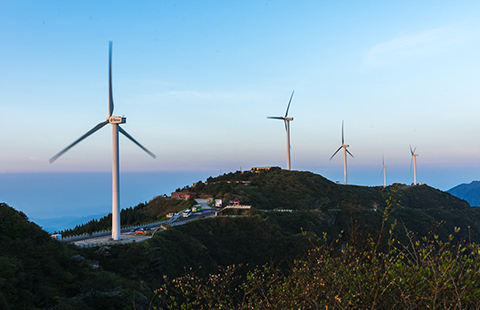Govt 'set' to resume nuclear projects
By Liu Yiyu and Ding Qingfen (China Daily) Updated: 2012-07-20 09:27China is ready to resume nuclear power project approval, suspended last year in the wake of the Fukushima nuclear disaster in Japan, according to the former head of the National Energy Administration.
Speaking exclusively to China Daily, Zhang Guobao said the government may now "consider starting construction of four new projects that had been approved" prior to a suspension of activities after the crisis in Japan in March 2011.
The four nuclear plants, with seven reactors in total, were due to start construction in Fuqing, Fujian province, Tianwan, Zhejiang province, Yangjiang, Guangdong province and Shidaowan, Shandong province.
The projects are planned by the country's three nuclear power developers - China National Nuclear Corp, China Guangdong Nuclear Power Corp and China Huaneng Group.
Although not yet "officially announced", Zhang also revealed that the State Council gave approval in principle to a nuclear safety plan in June, for a five-year period ending in 2015 and long-term targets for 2020.
In the aftermath of Fukushima, the global nuclear power sector has been seen by energy analysts as being plagued by uncertainty.
European countries abandoned or postponed plans for nuclear expansion, but many emerging economies, including China, said they remained committed to nuclear power and that they planned to continue leading nuclear power development.
The Chinese government has made strenuous efforts to check and enhance nuclear safety across the country since the disaster, added Zhang.
It ordered a nine-month inspection at 41 reactors in operation or under construction, and at three reactors where construction was due to start, before the disaster struck.
The safety inspection report concluded that the quality of China's nuclear industry, including reactor design, manufacturing, construction and operations, was generally "under control", and that the country's nuclear safety standards meet International Atomic Energy Agency requirements.
However, the report also noted that some atomic plants didn't meet the latest requirements to safeguard again flood control and that some had "weak" capabilities in evaluating and dealing with tsunami-related problems.
A few civil experimental reactors and fuel-cycle facilities also fell short of new earthquake standards but corrective measure have been taken.
The agency also embarked on a research and development plan for nuclear safety technology, aiming to increase the safety level of its mainstream technology, or the advanced second-generation reactors.
And the agency established a separate division to manage nuclear power, showing the importance the government attaches to future nuclear development.
Zhang added that Chinese energy companies are now making contributions to international energy development too, by sharing the country's nuclear technology expertise to a number of countries.
CNNC, the country's largest nuclear power developer, signed an agreement with Argentina's National Atomic Energy Commission in June for nuclear program cooperation based on its latest advanced 1,000-megawatt pressurized water nuclear power reactor technology.
That demonstration project is scheduled to begin at the end of 2013.
Contact the writers at dingqingfen@chinadaily.com.cn and liuyiyu@chinadaily.com.cn
- S.Korea sees opportunity to expand presence in Chinese market with FTA
- Thailand-China railway cooperation a boon for both
- Mexico seeks to attract more Chinese travelers
- Hao Jianming: Business strategy with the wave of M&As
- Jack Ma shares spotlight with leaders and stars
- China's first electricity-powered aircraft gets production approval
- Yuan-denominated payment between China and Japan doubles: SWIFT
- Chinese firm to expand Kenyan airport
















